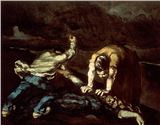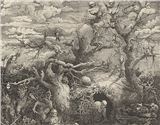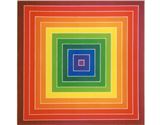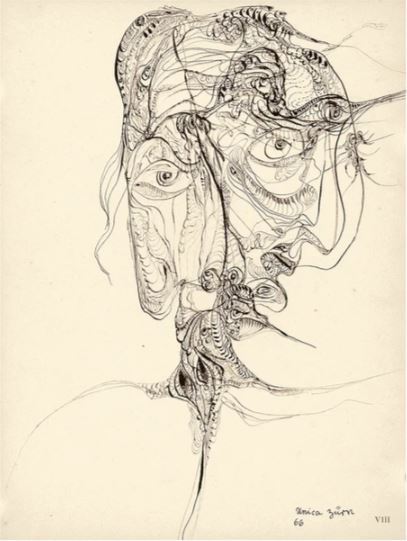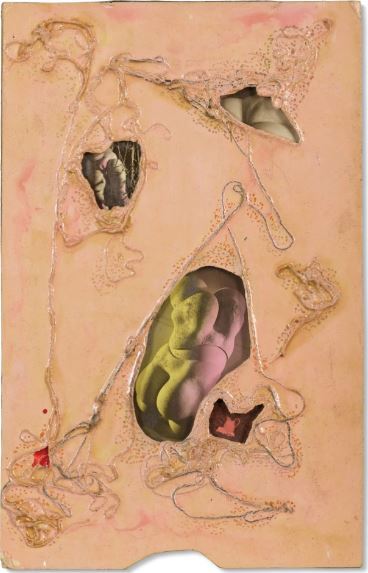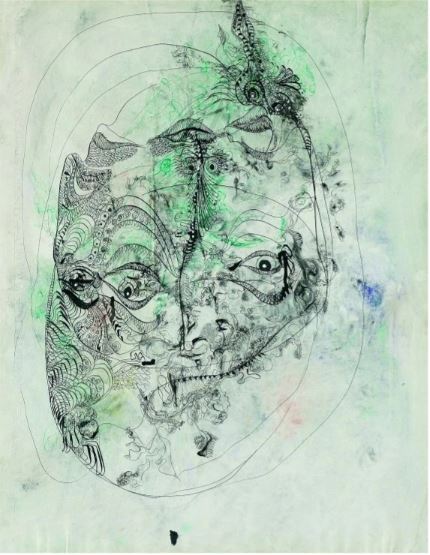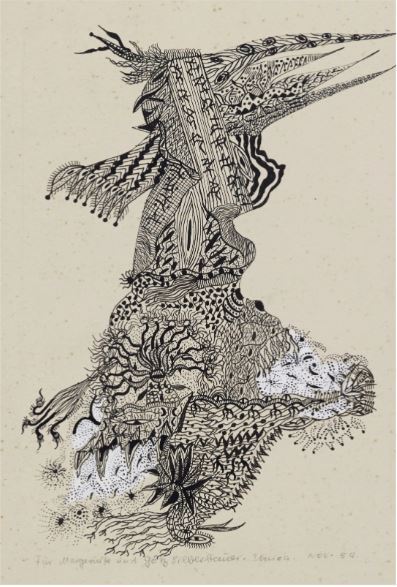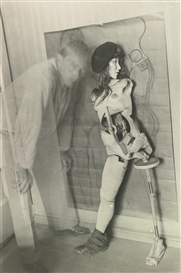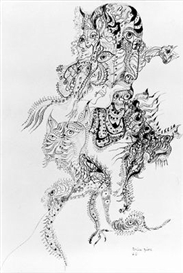Unraveling Unica Zürn
Unica Zürn was at the heart of mid-20th century surrealism. Her avant-gardist life yielded fascinating artistic results – and dark personal sacrifices
Adam Szymanski / MutualArt
Jun 14, 2023
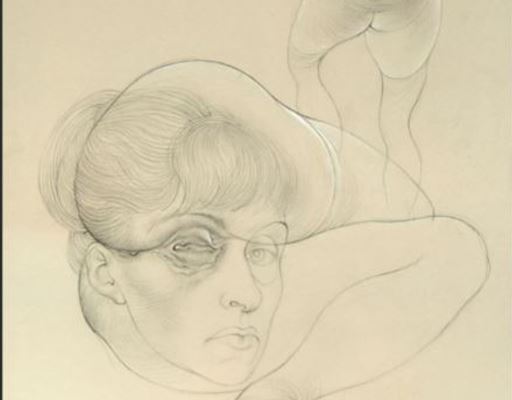
Born in Berlin in 1916 to an upper-middle-class family, Unica Zürn’s early experiences were tinged by personal tragedy and emotional turmoil. Her father’s absenteeism, her mother’s emotional coldness, and her brother’s incestuous violence would cast long, haunting shadows on her psyche and impact her eventual turn to automatic drawing.
During the 1930s, Zürn worked as a steno-typist and dramaturge for Universum-Film-AG (UFA), a film corporation appropriated by the Nazis for WWII propaganda films. Her collaboration with an institution that furthered Nazi atrocities only intensified her enduring guilt and self-loathing.
Unica Zürn, Untitled, 1966. Courtesy of Germann Auctions
Her writing career Zürn began in the 1940s. Her short stories were imbued with existential themes and found modest success in German newspapers and radio stations. She married in 1942, and when the marriage ended in divorce seven years later, she lost custody of her two children. In 1953, while working as a freelance writer in West Berlin, she attended an exhibition of the surrealist artist Hans Bellmer's work at the gallery of Rudolf Springer. It had a profound impact on her, and soon after she abandoned her freelance writing career and moved to Paris with Bellmer, where they lived a reclusive life in various hotels. Zürn experienced multiple pregnancies but never gave birth again.
The string black market abortions which marked her tumultuous relationship with Bellmer were part of an intensely creative, deeply erotic and publicly-displayed sadomasochistic relationship that they would maintain until her death in 1970.
Hans Bellmer, Unica Zürn, ZÜRN, 1956. Courtesy of Christie's Paris
Bellmer, best known for his life-size pubescent female dolls that reflected a brooding masculine desire to objectify and control, found in Zürn a muse and submissive lover. She willfully became the living incarnation of his longstanding fascination with dolls, indulging in erotic bondage scenarios that were painstakingly photographed. It was from this position of total submission that Zürn would create art.
She thoroughly embraced Hans Bellmer's dominant role, going as far as attributing authorship of her novel The Man of Jasmine to “the wife of Hans Bellmer.” The theme of the novel fits its attribution, as the story follows a female protagonist's journey through various intimate encounters with dominant male figures that give her purpose in life. Zürn herself once said, “I always need a companion to tell me what to do … They just have to say, ‘Now you do this, now you do that.’”
Hans Bellmer, Unica avec l'oeil sexe, 1961. Courtesy of Remy Le Fur & Associates
Zürn’s wilful submission was not without a measure of rage. In another of her experimental novels which makes heavy use of anagrams, The Trumpets of Jericho, the narrator seethes at the discovery that she is pregnant, and is filled with disdain towards all of the seven men who could be the father. The novel embarks on various abortion fantasies that include forcing the unborn out prematurely, and even pulling it out with her own hands.
When Zürn met the surrealist writer Henri Michaux in 1957, she was convinced that Michaux was the incarnation of the “man of Jasmine,” a fantastical erotic figure whom she had recurring dreams about since her childhood. This acquaintance quickly blossomed into a deep love, prompting Zürn to join Michaux in several of his mescaline experiments. This exploration, however, may have triggered her first mental crisis, leading to a series of psychotic episodes from 1960 onwards. These incidents resulted in her hospitalization and marked the onset of her chronic struggles with dissociative states, severe depression, and suicide attempts.
Unica Zürn, Kopf. Courtesy of Ketterer Kunst Munich
Despite being hospitalized at the Saint-Anne Psychiatric Hospital in Paris for the last decade of her life, Zürn was remarkably productive. It was in the hospital setting that she created Oracles et Spectacles (1967), an unpublished series of ten drawings, combining ink and collage on paper. Oracles et Spectacles unfolds as a dark odyssey into the realm of the unconscious. In each drawing, Zürn morphs human figures into surreal, hybrid entities. The forms are fluid, as though in perpetual metamorphosis, each figure caught in the middle of transformation. As a series, these images are emblematic of Zürn's intuitive artistic process, embodying her technique of automatic drawing, inspired by the surrealists, yet undeniably possessing her unique style of intricately layered wandering lines that lead to delicately composed figures. The hybrid figures in Oracles et Spectacles reflect Zürns lifelong fascination with the human body's mutability, a theme central to her collaboration with Bellmer.
Unica Zürn, Composition, 1954. Courtesy of Cornette de Saint Cyr Paris
Her drawings from the hospitalized period often reflect her sense of being observed, with eyes and faces reoccurring motifs in her work. These multitudes of eyes, witnesses to her tumultuous life, evoke her perception of being in constant scrutiny and surveillance. Commonly rendered in India ink, her drawings feature clouds of human and cephalopod-like bodies, swirling in a convoluted entanglement. The bodies are bound together, a visual echo of Bellmer's ropes which bound her flesh.
Zürn’s work which was exhibited alongside the likes of Marcel Duchamp and Man Ray during her lifetime, and recent years have witnessed a renewed interest in her artistic output. Le Musée d’Art et d’Histoire de l’Hôpital Sainte-Anne (a museum on the grounds of the hospital where she lived in the 1960s) featured a solo show devoted to Zürn in 2020, and a selection of her drawings was recently included in the 2022 Venice Biennale’s Central Pavilion. Zürn’s coming-of-age novel Dark Spring has also served as the inspiration for Alex McQuilkin’s 2016 two-channel video work of the same name that was exhibited as part of the group show “Beyond Appearances - Women Looking at Women” at Kunstraum Brooklyn in 2020.
When Hans Bellmer was left incapacitated by a stroke in 1969, he informed Zürn that he could no longer “be responsible for her.” Zürn committed suicide by jumping out the window of their shared apartment in October 1970 while on leave from the psychiatric hospital. When Bellmer died in 1975, he was buried next to her.
Whether their enduring love for one another existed in spite of the severe experiments in bondage and submission that conducted together, or because of them, there is little doubt that it existed. Their shared gravestone in Père Lachaise cemetery reads, "My love will follow you into Eternity."
For more on auctions, exhibitions, and current trends, visit our Magazine Page


